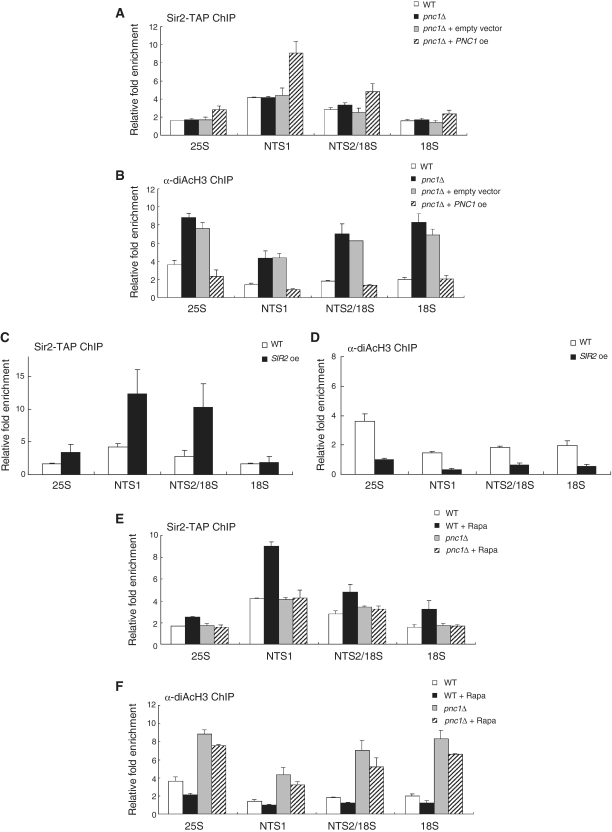Figure 4.
Pnc1 is required for enhancement of Sir2 binding to rDNA under TORC1 inhibition. (A) PNC1 overexpression enhances association of Sir2 with rDNA. The degree of Sir2 binding to rDNA was measured using the ChIP assay in wild-type, pnc1Δ, pnc1Δ cells containing an empty vector and pnc1Δ cells expressing Pnc1-GFP on the p416GPD vector. (B) PNC1 overexpression lowers the H3 acetylation level at rDNA. The acetylation level of histone H3 at the rDNA regions was measured using the ChIP assay in wild-type, pnc1Δ, pnc1Δ cells containing an empty vector and pnc1Δ cells expressing Pnc1-GFP on the p416GPD vector. (C) SIR2 overexpression enhances association of Sir2 with rDNA. The degree of Sir2 binding to rDNA was measured using the ChIP assay in wild-type and sir2Δ cells expressing Sir2-TAP on the p416GPD vector. (D) SIR2 overexpression lowers the H3 acetylation level at rDNA. The acetylation level of histone H3 at the rDNA regions was measured using the ChIP assay in wild-type and sir2Δ cells expressing Sir2-TAP on the p416GPD vector. (E) Rapamycin does not enhance association of Sir2 with rDNA in pnc1Δ cells. The degree of Sir2 binding to rDNA was measured using the ChIP assay in wild-type and pnc1Δ cells after treatment with or without 200 ng/ml rapamycin for 1 h. (F) Rapamycin does not lower the H3 acetylation level at rDNA in pnc1Δ cells. The acetylation level of histone H3 at the rDNA regions was measured using the ChIP assay in wild-type and pnc1Δ cells after treatment with or without 200 ng/ml rapamycin for 1 h. Values represent the average of three independent experiments and error bars indicate standard deviations.

